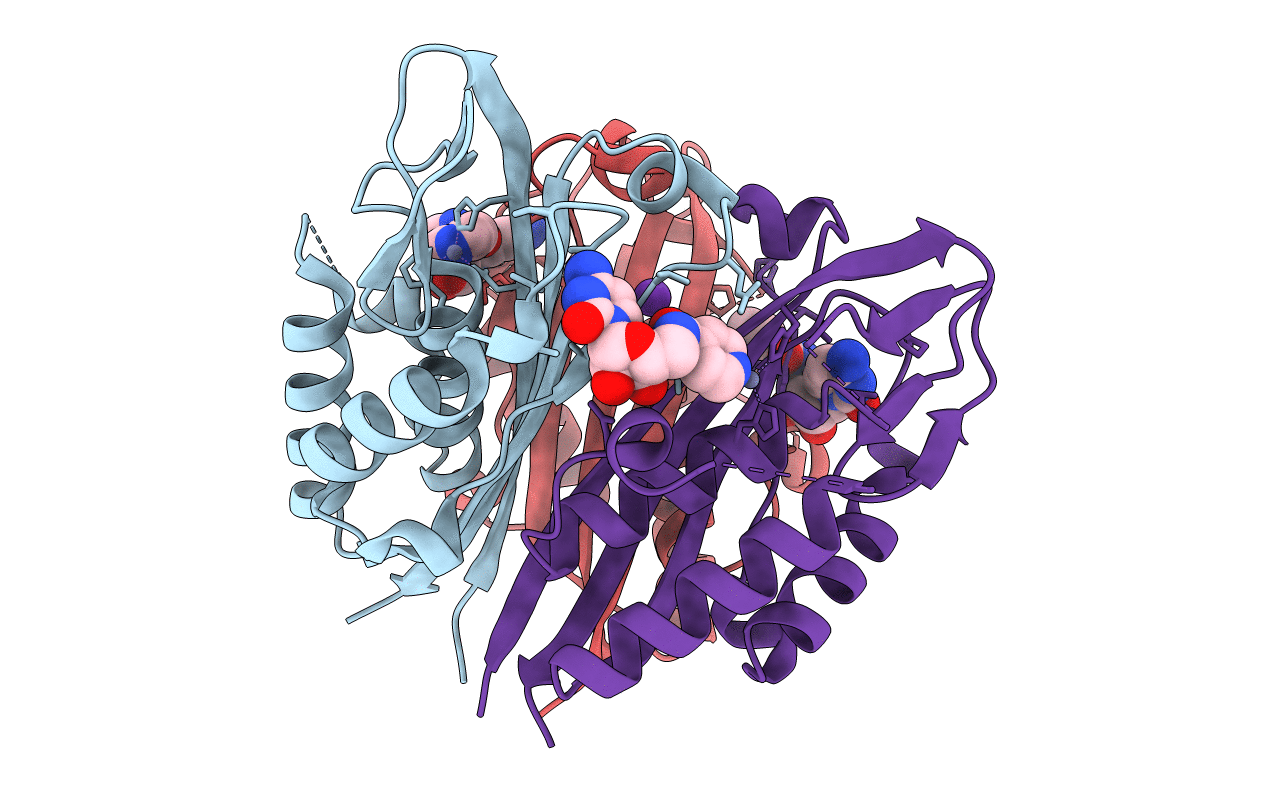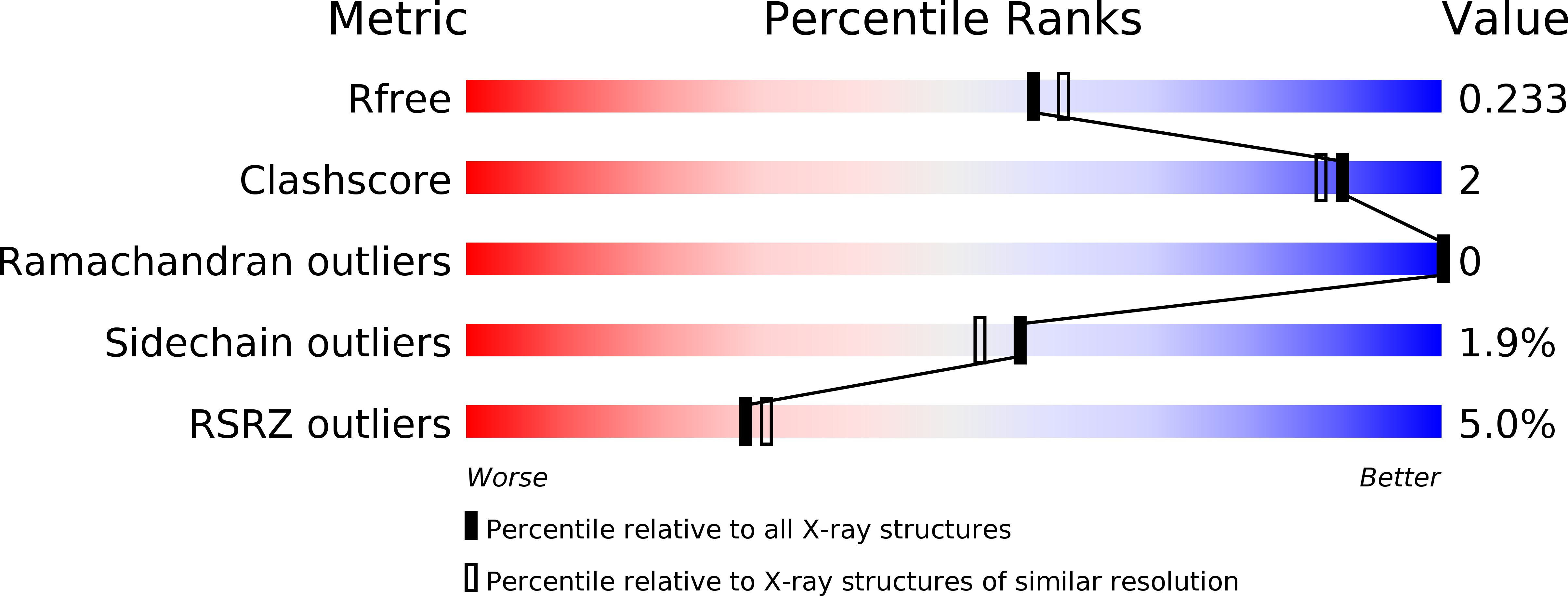
Deposition Date
2009-10-23
Release Date
2009-11-10
Last Version Date
2023-09-06
Entry Detail
PDB ID:
3KE1
Keywords:
Title:
Crystal structure of 2C-methyl-D-erythritol 2,4-cyclodiphosphate synthase from Burkholderia pseudomallei in complex with a fragment-nucleoside fusion D000161829
Biological Source:
Source Organism:
Burkholderia pseudomallei (Taxon ID: 28450)
Host Organism:
Method Details:
Experimental Method:
Resolution:
2.05 Å
R-Value Free:
0.22
R-Value Work:
0.18
R-Value Observed:
0.18
Space Group:
C 1 2 1


